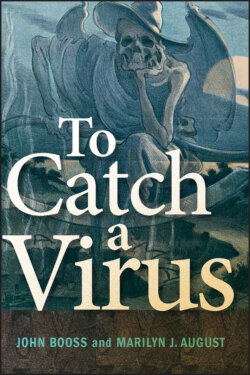Читать книгу To Catch a Virus - John Booss - Страница 24
Embryonated Eggs
Оглавление“The recognition of the potentialities of the method for virus research was almost entirely due to Ernest William Goodpasture and his collaborators,” wrote W. I. B. Beveridge and F. M. Burnet in their 1946 monograph on the use of the chicken embryo for the cultivation of viruses and rickettsiae (3). Goodpasture was a Tennessee-born pathologist who early in his career had trained with William Welch, who was one of the founders of American pathology at Johns Hopkins (70). As the medical writer Greer Williams told the story, working at Vanderbilt University, Goodpasture had put an M.D. pathology trainee, Eugene Woodruff, to work on investigating the pathogenesis of fowlpox (70). His wife, Alice Woodruff, a Ph.D. physiologist, joined the effort somewhat later in an attempt to culture the virus. After their unsuccessful attempts in tissue culture, Goodpasture suggested to Alice Woodruff that they try embryonated chicken eggs for the study of fowlpox.
As later reviewed by Goodpasture, there was a very long history of the study of embryonated eggs in experimental biology (23). He noted that the first reported creation of a “window” in the egg to observe the embryo was by L. Beguelin in 1749. He also noted that the first published study of the use of embryonated eggs in infection was in 1905 by C. Levaditi working with the spirillum of fowl. The laurel for the first application of embryonated eggs to the study of viral infection goes to Peyton Rous and James B. Murphy, who in 1911 reported the successful transplantation of a transmissible sarcoma of fowl (52). The tumor was transmitted to the chick not only by finely divided tumor but also by “a filtrate free of the tumor cells,” resulting in tumors in the membranes of the embryo.
Starting with the technique of E. R. Clark for operating on chicken embryos (9), Goodpasture’s group developed and adapted the technique for virological studies. The methods to deposit the virus in a sterile fashion on the chorioallantoic membrane or in the allantoic or amniotic cavities were carefully described (22). The first report by the Goodpasture group on the use of the embryonated egg was that of Alice Woodruff and Goodpasture for infection with fowlpox virus (71). Goodpasture’s principal interest was in the pathogenesis of viral infections; however, with others he also developed the embryonated egg for vaccine production (22). That work laid the foundation for the development of influenza vaccine.
The next major development was the report by Macfarlane Burnet in 1935 of the growth of influenza virus in embryonated eggs (5). Serial passage of influenza in eggs was required before egg membrane lesions became obvious. Hence, it did not appear that the technique would prove of use for primary virus isolation. Presciently, Burnet suggested that the method could serve as a means of antigen preparation for immunization.
The necessary step to bring the technique into primary diagnostic work resulted from a chance observation. George Hirst, working at the Rockefeller Foundation in New York, reported that “When the allantoic fluid from chick embryos previously infected with strains of influenza A virus was being removed, it was noted that the red cells of the infected chick, coming from ruptured vessels, agglutinated in the allantoic fluid” (26). This observation was confirmed by L. McClelland and R. Hare at the University of Toronto (40). Further expansion of this observation facilitated the development of diagnostic tests for influenza, both primary isolation and antibody development. For virus isolation, clinical specimens were inoculated into eggs, the amniotic fluids were harvested, and a dilution of fluid was mixed with red blood cells. Agglutination indicated likely influenza virus infection, which was proven by the inhibition of agglutination by virus-specific antisera. Henceforth, use of the ferret, with its attendant costs, housing, and susceptibility to exogenous infection, was superseded by use of embryonated eggs (27). The embryonated egg proved to be a boon to virological studies in general and to influenza in particular. As a measure of the importance of the technique, Nobel Laureate Macfarlane Burnet simplified his description of many years of research to say, “From 1935–1955, one can summarize my life as learning about influenza virus in chick embryos” (6).
The use of experimental animals and that of embryonated eggs were the principal means of virus isolation prior to the development of cell culture in the 1950s. Animals were crucial to the isolation and characterization of herpes viruses, among many others. In parallel, development of serological techniques to measure virus-specific antibodies was to become the major means of viral diagnosis for several decades. That story is told in the next chapter.
